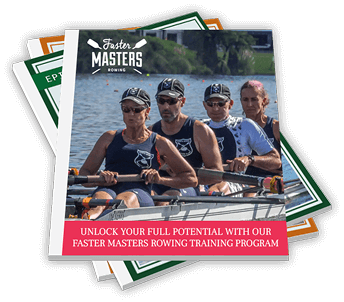Why rowers push the handles down at the catch causing the blade to sky - and how to fix it.
Timestamps
01:00 Roger Watts told me "oars are still creating hazards to low flying seagulls as the right hand pushes forward and down at the catch...." I hope this doesn't apply to you, dear reader.
Skying describes the position of the spoon of the oar relative to the water. As you get close to full slide the oar rises high above the water surface - this is called skying. It's about efficiency - can your oars enter the water when you are at full compression? This gives maximal stroke length. The longer your oars are above the water, your slide comes to full compression and then starts to move back - this means you have less leg drive to use because your knees are no longer at their highest point.
03:00 Causes of skying
If on the recovery - the bottom edge of your blade clips the water rowers tend to push their hands down towards their legs. Squaring the blade causes skying if they push the handle down when rolling it square. If you carry the oars close to the water on the recovery, there isn't room to square the oar without clipping the water. A lack of awareness of weight in the hand - downward pressure on the handle - if this pressure reduces, the handle rises and the blade tip gets closer to the water.
04:30 Cures for skying
- learn how to have more weight in the hand - hold the oar handle at the same height as your elbow at the finish to make it easy to put downwards pressure on the handle. On the recovery you don't need a lot of downward pressure to keep the handle tracking horizontally.
- learn the horizontal path - Al Morrow's talk at VIP day Good Rowing is Horizontal.
Keeping the handle at the same height until just before the catch. You won't hit any waves and if the height is correct, you won't clip the water surface when squaring either. The handle should not corrugate up/down during the recovery. Use video of yourself filmed 90 degrees square off to see what your handles do.
06:50 Learn the horizontal path
Row with oars flat on the surface of the water during the recovery. The water surface is always horizontal. By pushing the handles along the surface you get a sense of how the handles track when there's no vertical movement on the recovery. The handle height when your oars are on the surface is nearly identical to the handle height on the power phase of the stroke. Watch the path of the handle - look at your hands guiding the oar.
Add visual reference cues - e.g. the view past your hands to something beyond like the rigger. Build the tap down into the exercise - after running the oars along the surface then push the handles down 1 cm, then 2 cm progressively lowering the handle height but try to keep the path of the handle horizontal.
Blade Parallels compared
In the article above I recommend using video to assess your oar handle heights. You can also use photos, By drawing parallel red arrows down the shafts of the oars, it's easy to compare each athlete and whether their oar spoons are likely to be close to the water at the catch.
On the oar shafts the lines are pointing to the athletes' hands so you can see where they're out of alignment. then I copied the lines and stacked them one above the other inside the red box to make comparison easier.
This is a very skilled crew and so we're really looking at the smallest refinements of the catch.

Get easy recordings using Streamyard referral link
Further resources
- The Square Blades Challenge - learn how to row square blades in 3 weeks. [Coaching camp]
- The Rowing Stroke Cycle - free training course [6 modules]
- Mis-timing the catch - podcast [13 minutes]

